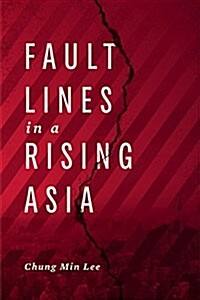
단행본
Fault lines in a rising Asia
- 개인저자
- Chung Min Lee
- 발행사항
- Washington, DC: Carnegie Endowment for International Peace, 2016
- 형태사항
- 441 p. ; 23 cm
- ISBN
- 9780870033117
- 청구기호
- 390.91 L477f
- 서지주기
- Includes bibliographical references
소장정보
| 위치 | 등록번호 | 청구기호 / 출력 | 상태 | 반납예정일 |
|---|---|---|---|---|
이용 가능 (1) | ||||
| 1자료실 | 00016895 | 대출가능 | - | |
이용 가능 (1)
- 등록번호
- 00016895
- 상태/반납예정일
- 대출가능
- -
- 위치/청구기호(출력)
- 1자료실
책 소개
Asia has already risen by most hard-power measures. But without an understanding of the downsides of Asia&;s rise, the conventional narrative is incomplete, misleading, and inaccurate. Chung Min Lee explores the fundamental dichotomy that defines contemporary Asia. While the region has been an unparalleled economic success, it is also home to some of the world&;s most dangerous, diverse, and divisive challenges. Contrary to prevailing wisdom, he says, Asia&;s rise doesn&;t mean the demise of the West.
Asia&;s rise over the past four decades is one of the most significant geopolitical and geoeconomic developments in world affairs as evinced by China&;s, and more recently, India&;s, accelerated economic growth. Yet the conventional narrative of Asia&;s rise is incomplete, if not misleading, given the fundamental dichotomy that defines contemporary Asia: a region with unparalleled economic success but also home to the world&;s most dangerous, diverse, and divisive security, military, and political challenges. How the strategically consequential Asian states manage to ameliorate or even overcome traditional geopolitical tinderboxes across the Taiwan Strait, the Korean Peninsula, and the Indian subcontinent and new zones of strategic competition such as the South China Sea is to going to have a profound impact on the shaping of regional order well into the 21st century.
Asia&;s rise over the past four decades is one of the most significant geopolitical and geoeconomic developments in world affairs as evinced by China&;s, and more recently, India&;s, accelerated economic growth. Yet the conventional narrative of Asia&;s rise is incomplete, if not misleading, given the fundamental dichotomy that defines contemporary Asia: a region with unparalleled economic success but also home to the world&;s most dangerous, diverse, and divisive security, military, and political challenges. How the strategically consequential Asian states manage to ameliorate or even overcome traditional geopolitical tinderboxes across the Taiwan Strait, the Korean Peninsula, and the Indian subcontinent and new zones of strategic competition such as the South China Sea is to going to have a profound impact on the shaping of regional order well into the 21st century.
